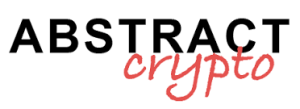MetaMask has joined Phantom, WalletConnect and Backpack through the Security Alliance (SEAL) to create a global phishing warning network. The network centralises reports so wallets can act on validated threats at scale.
How are reports validated?
SEAL’s verifiable phishing reports let researchers prove a page contains the malicious content users report, removing guesswork.
Reports are automatically validated and shared across participants without central approval, speeding defensive action.
How will Metamask security collaboration deliver real time phishing alerts?
Anyone with a valid SEAL report can trigger phishing warnings across connected wallets, which then block interactions with suspect domains. This real-time alerts pipeline counters tactics like fast landing-page rotation and cloaking.
Distribution is immediate to participating clients and does not require manual sign-off, shortening response windows and preserving funds. Ohm Shah of MetaMask said “the alliance helps disrupt the infrastructure drainers rely on” on 23 October 2025.
How do verifiable phishing reports stop crypto drainers?
What makes a report verifiable?
Verifiability rests on evidence that a live page contains the phishing UI researchers describe, plus metadata proving capture time and origin. That chain of proof makes automated blocks defensible and audit-ready.
Phishing attacks were the largest class of incidents in H1 2025; CertiK estimates more than $400 million stolen in that period. CertiK notes coordinated feeds can materially lower successful drains.
In brief, SEAL’s pipeline converts user reports into verified indicators pushed to wallets, cutting detection times and shrinking attackers’ windows. In brief, shared evidence plus instant alerts improves protection for end users and smaller providers.
Practical steps investors can take to avoid phishing attacks
- Verify links and avoid unsolicited dApp prompts.
- Use hardware wallets for large balances and separate accounts for trading.
- Enable 2FA and keep wallet software updated.
Treat unexpected wallet prompts as hostile and pause before signing; attackers rely on urgency to force mistakes.
MetaMask, wallet providers and the broader community aim to scale the SEAL backed network through verifiable phishing reports and real time wallet alerts to prevent crypto drainers.


